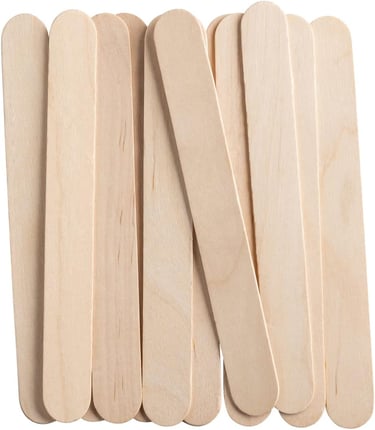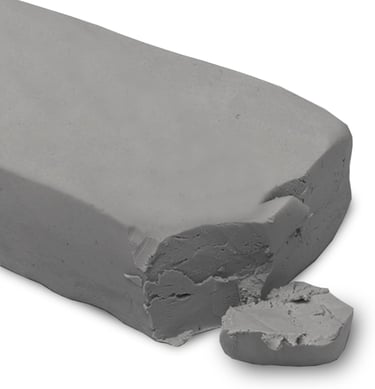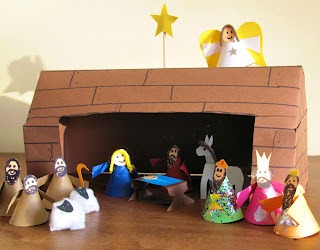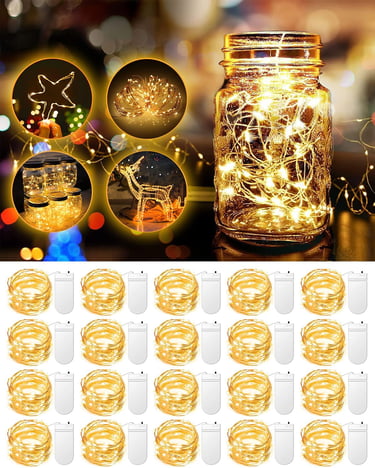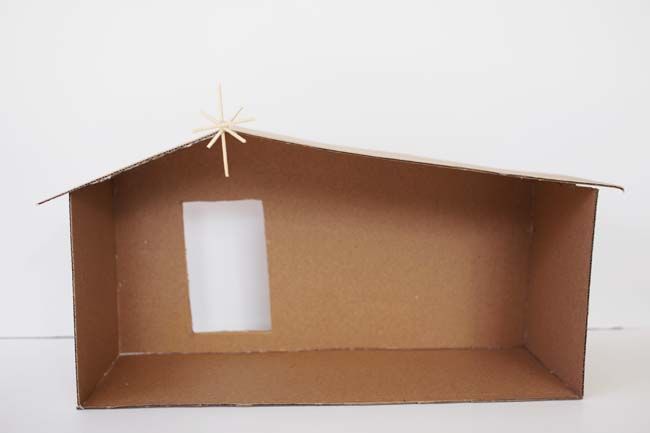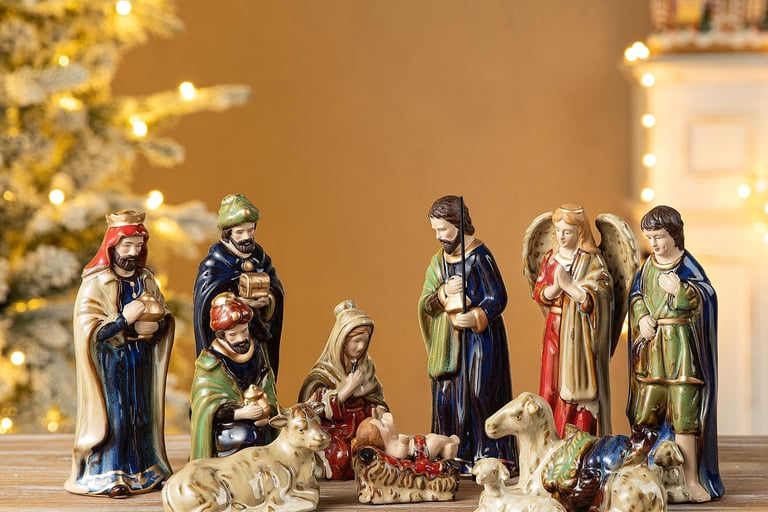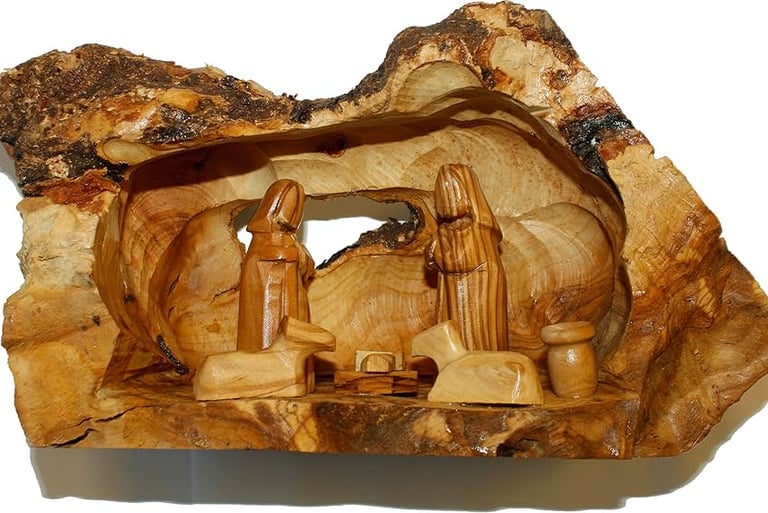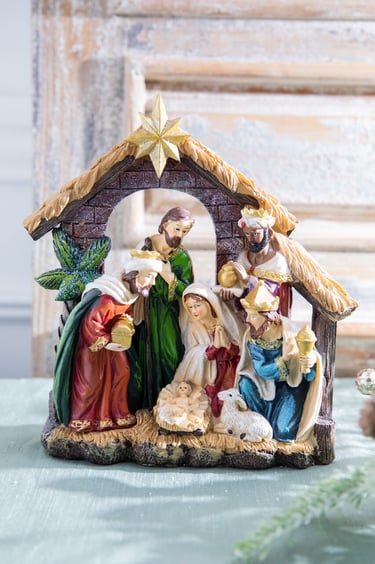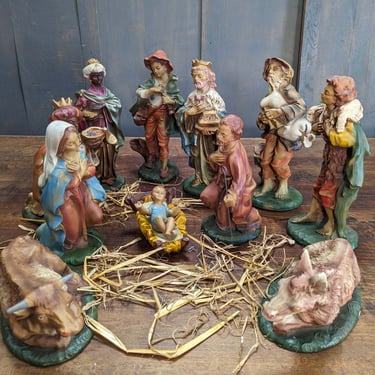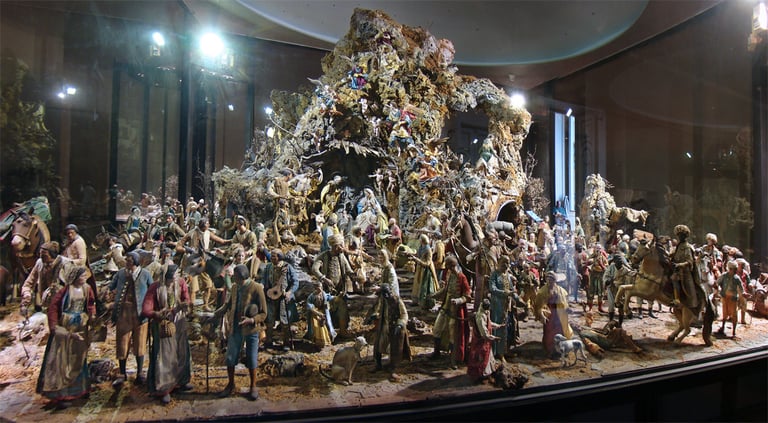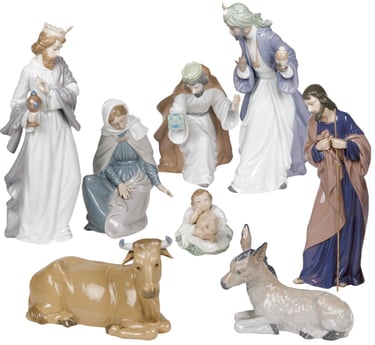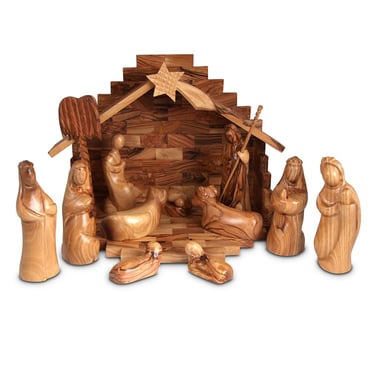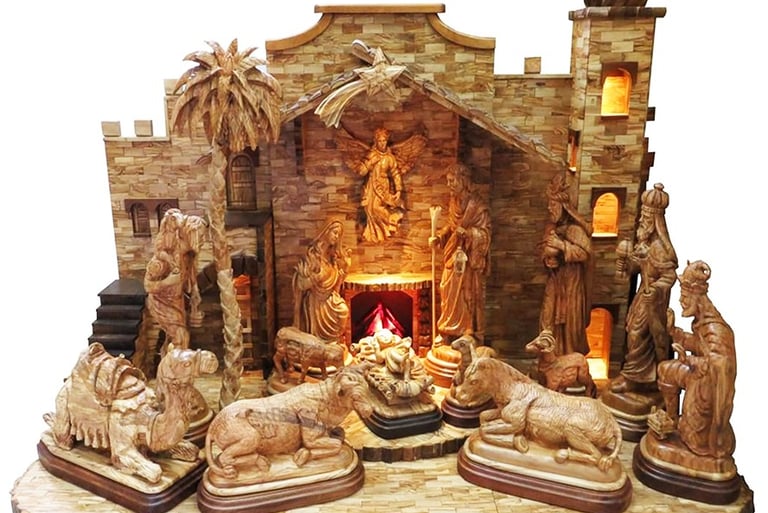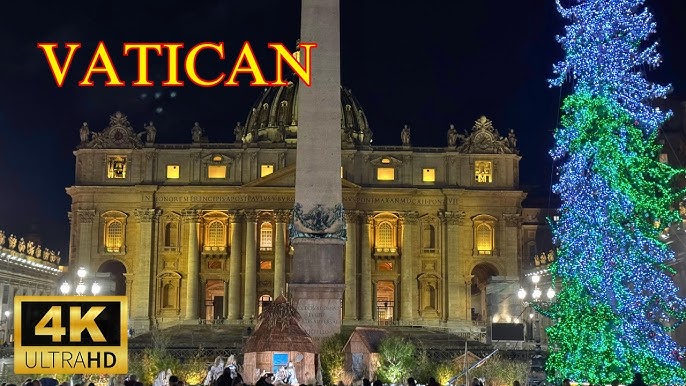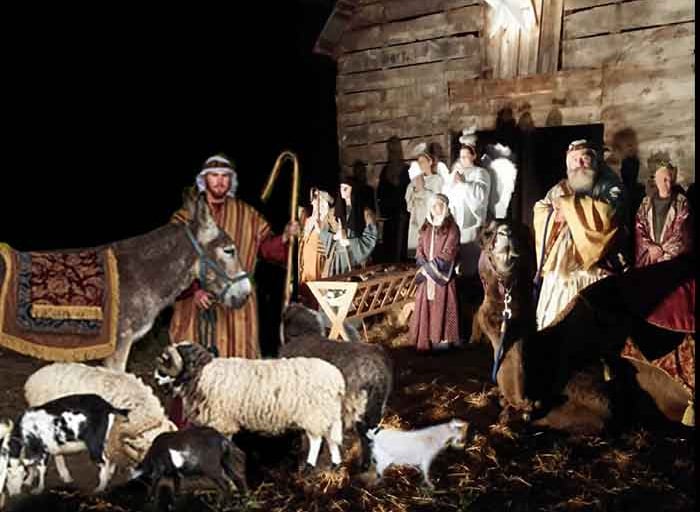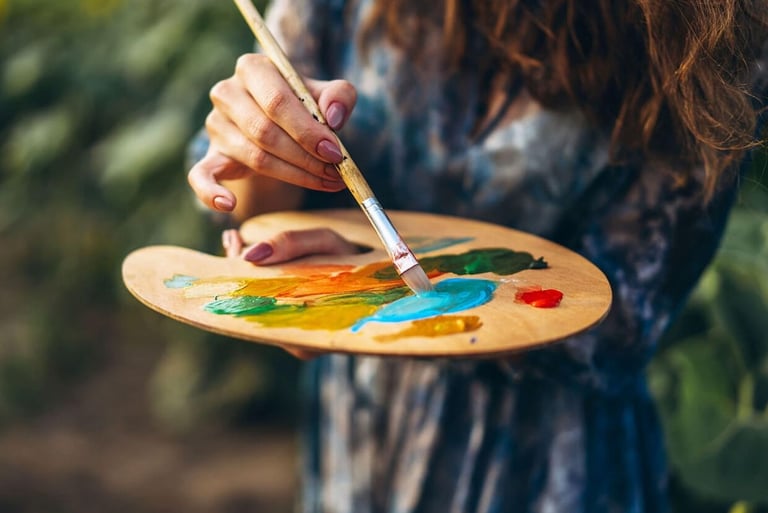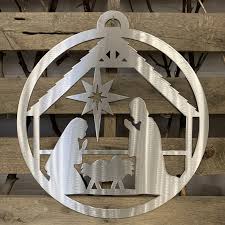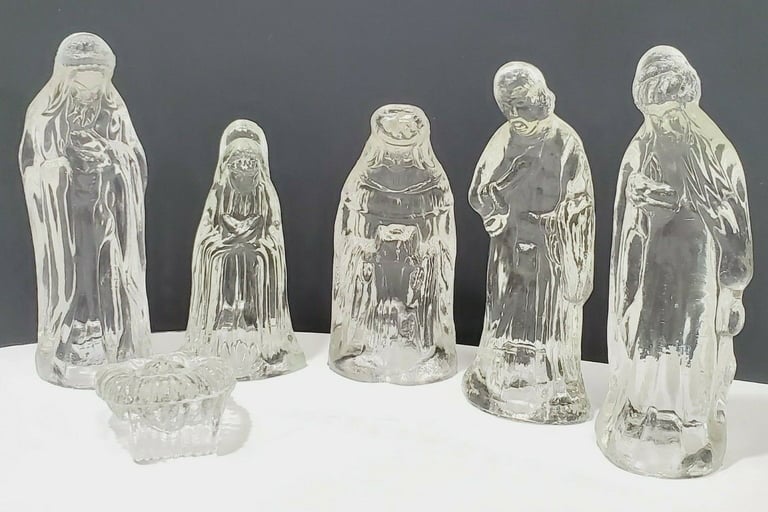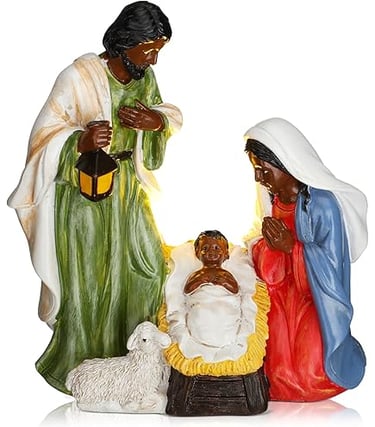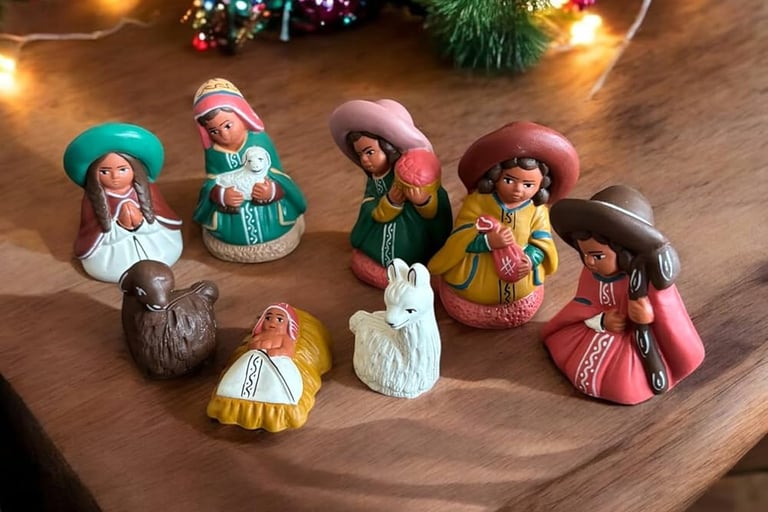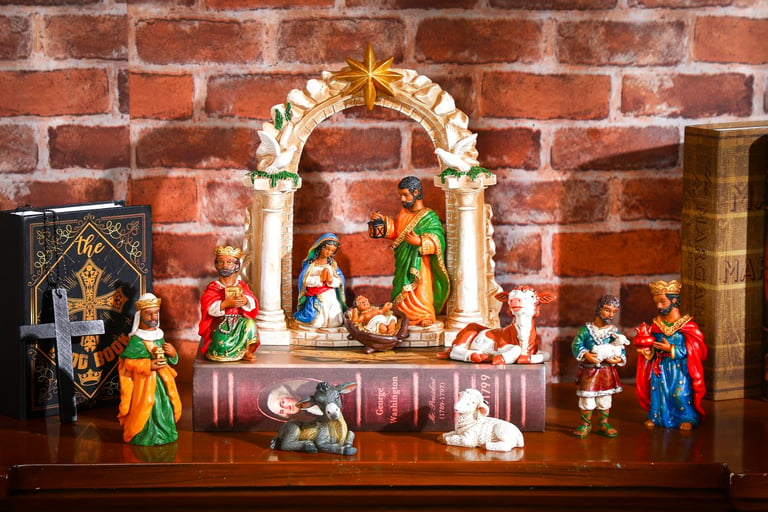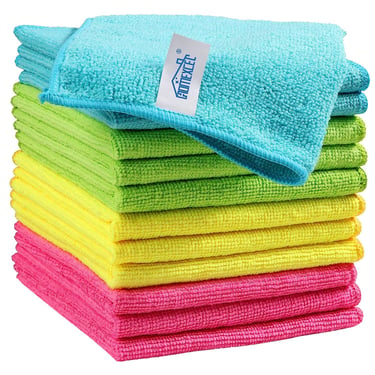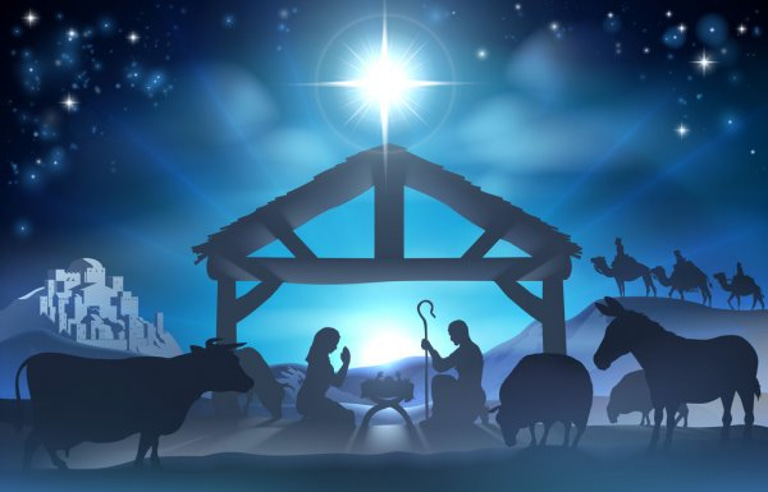Complete Guide to Creating and Displaying The Best Nativity
Discover expert tips on displaying the best nativity scenes! From DIY projects and eco-friendly materials to rare collectibles, lighting ideas, and safety tips, this guide has it all for your perfect Christmas setup.
Grace Callahan
3/5/202541 min read
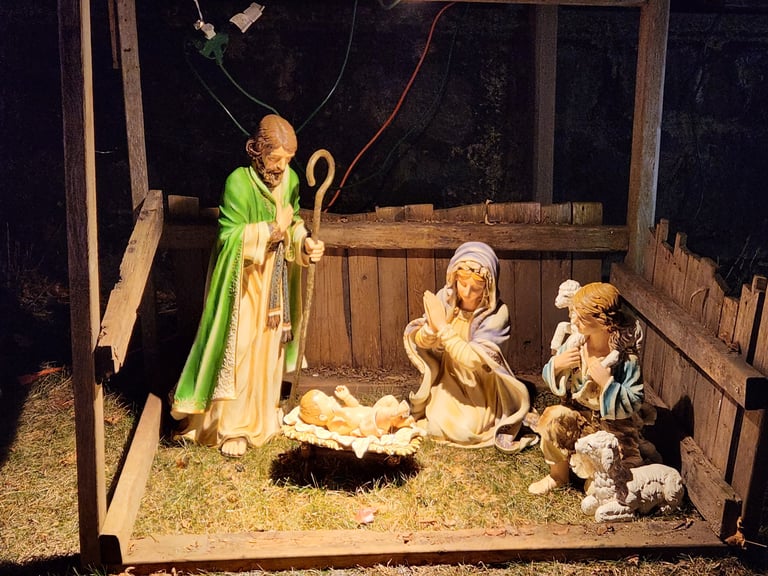

Introduction:
Creating the perfect nativity scene goes beyond just setting up a few figurines on a shelf! Whether you're crafting a DIY set with your family, showcasing rare collectibles, or lighting up your display for a magical effect, the nativity scene is a timeless tradition that can be personalized in countless ways. In this comprehensive guide, we’ll dive into everything from eco-friendly materials and safety tips to advanced techniques and inclusive designs. Let’s bring the story of Christmas to life in a way that’s meaningful and visually stunning!
DIY & Crafts
How to Make Your Own DIY Nativity: A Personal, Handmade Touch for Christmas
There’s something special about creating your own Nativity scene—something that a store-bought set just can’t replicate. Whether it’s the imperfect brushstrokes on a hand-painted Mary or the slightly lopsided stable that somehow makes the whole thing feel more real, a DIY Nativity carries warmth, personality, and meaning. And let’s be honest—how many Christmas decorations actually tell a story?
If you’re looking to craft your own set, you don’t need to be a master woodworker or an expert sculptor. You just need a little creativity, some basic materials, and a willingness to embrace the charm of handmade imperfection. Let’s dive in.
Step-by-Step Guide: Crafting a Nativity Set That Feels Like Yours
1. Build the Stable: The Heart of the Scene
The stable sets the stage, and you’ve got options depending on your style:
Rustic and natural? Use popsicle sticks, small branches, or scrap wood for a cozy, old-world feel.
Minimalist? Foam board or cardboard can create a clean, modern silhouette.
Kid-friendly? A shoebox or even a fabric tent can work!
👉 Pro tip: No one is grading you on historical accuracy. Whether your stable looks like something from Bethlehem or a Scandinavian Christmas village, it’s your creative vision.
Assembly Tips:
Construct simple walls and attach a slanted roof—wood glue or a hot glue gun will be your best friend.
Reinforce the structure if needed (because let’s face it, toddlers or pets will probably investigate).
2. Make the Figurines: Imperfection is Part of the Magic
Now, the fun part: crafting Mary, Joseph, Baby Jesus, and the rest of the crew.
If you like sculpting: Air-dry clay is a forgiving, no-bake option, while polymer clay gives you a bit more durability.
If sculpting isn’t your thing: Cut figures from cardstock, felt, or even wooden pegs. Painted peg dolls make an adorable, sturdy alternative.
🎨 Don’t stress over details. The charm of a DIY Nativity is in the homemade look—so what if Joseph’s nose is a little crooked?
👉 Pro tip: If working with kids, let them design their own characters! A shepherd with purple hair? A donkey with polka dots? Why not?
3. Bring It to Life with Paint and Texture
This is where your Nativity set truly becomes yours.
Use acrylic paints for rich, vibrant colors.
Add gold accents on the Magi’s robes or a soft blue for Mary’s cloak.
Fabric scraps (felt, linen, or cotton) make great tiny blankets, robes, or even a manger cushion.
🔥 Bonus idea: If you want a farmhouse-style look, try staining wooden pieces for a rustic effect instead of painting them.
Materials You’ll Need (and What You Can Substitute)
Not everything has to come from the craft store. You might already have these at home:
✅ Air-dry or polymer clay (or use felt cutouts if sculpting isn’t for you!)
✅ Wood pieces (popsicle sticks, scrap wood, or even cinnamon sticks for a fragrant touch!)
✅ Cardboard or foam board (great for lightweight stables and backdrops)
✅ Acrylic paints (or even markers for a kid-friendly version)
✅ Glue gun or strong adhesive (because nothing ruins Christmas like a collapsing stable)
✅ Fabric scraps (for clothing, blankets, or extra texture)
Free Printable Templates: A Shortcut to Stunning Nativity Figures
Not everyone wants to sculpt tiny figurines from scratch (and let’s be honest, clay can be unforgiving). If you’re looking for an easier route, printable templates are a lifesaver.
Figurines: A quick search for “free printable Nativity templates” will bring up plenty of cut-out patterns. Some are classic, some are modern, and some have a charmingly childlike feel—perfect if you want kids to color them in.
Stable Designs: Whether you prefer a rustic wooden barn or a clean, minimalist silhouette, you’ll find free templates that can be printed and assembled with cardstock or lightweight wood.
👉 Pro tip: If you’re going for a papercraft Nativity, print your figures on heavier cardstock for durability.
Make It Uniquely Yours: Creative Touches That Elevate Your Nativity
Once your Nativity scene is assembled, it’s time to take it from basic to breathtaking.
1. Hand-Painted Details: The Little Things That Matter
Don’t be afraid to add intricate details! A soft blush on Mary’s cheeks, weathered textures on the shepherds’ cloaks, or subtle gold accents on the Magi’s gifts can add richness and warmth.
Feeling fancy? Try gold leafing around the star or Baby Jesus’ manger for a regal touch. Even a little shimmer or glitter (tastefully applied) can make the scene feel extra special.
2. Bring in Natural Elements: Texture Makes a Difference
Twigs, pinecones, dried moss, or even small stones can give your Nativity an earthy, grounded feel.
Want to add a festive scent? Tuck in a few pine needles or dried orange slices—they’ll make your display smell like Christmas itself.
3. Let There Be Light: The Power of Ambience
A simple string of warm fairy lights can transform your Nativity scene, making it glow softly like a Bethlehem night.
If you want something even more special, place a tiny LED candle inside the stable for a gentle, flickering effect.
Final Thought: More Than Just a Craft—A New Tradition
A DIY Nativity isn’t just about crafting—it’s about connection. With history, with tradition, with the Christmas story itself. Whether you keep it simple or go all out with artistic flourishes, the process of creating something with your own hands adds meaning to the season.
And the best part? This is something you can pull out year after year, a personal reminder of the time and love you put into it. So, what are you waiting for? Gather your materials, start crafting, and make something that reflects your vision of Christmas.
Would love to hear—what’s one detail you’re excited to add to your Nativity set? 🎨🌟
Eco-Friendly Nativity Sets: Celebrate Christmas with Sustainability in Mind
Christmas should be a season of joy, not waste. But let’s be real—between mass-produced decorations, excessive packaging, and throwaway holiday trends, it’s easy to lose sight of sustainability. That’s where an eco-friendly Nativity set comes in.
A handmade, sustainable Nativity scene isn’t just good for the planet—it’s meaningful, personal, and packed with character. Whether you're upcycling materials, supporting ethical artisans, or crafting something unique from nature, your green Nativity set can reflect both the story of Christmas and your commitment to the earth.
Ready to build a Nativity set that’s both beautiful and sustainable? Let’s dive in.
Sustainable Materials: Crafting with a Conscience
Forget plastic figurines and factory-made sets—there are plenty of natural, recycled, and biodegradable options that look just as stunning (if not better!).
1. Recycled Wood: Rustic with a Story
Instead of buying new wood, repurpose old furniture scraps, pallet wood, or reclaimed barnwood.
The result? A stable with history, texture, and a natural charm that no store-bought version can match.
👉 Pro tip: If you don’t have scrap wood lying around, check local salvage yards or even thrift stores. An old wooden picture frame can make a fantastic backdrop!
2. Air-Dry Clay: Earth-Friendly Figurines
Most air-dry clays are made from natural, non-toxic ingredients.
Unlike synthetic polymer clay, they break down naturally over time.
🎨 Feeling artistic? Hand-sculpt your figures, or let kids make their own quirky versions—it adds to the charm.
3. Biodegradable Fabrics: Say No to Microplastics
Skip the polyester! Use natural fabrics like cotton, linen, or hemp for character robes, blankets, or stable decorations.
Bonus: These fabrics decompose naturally, unlike synthetic ones that shed harmful microplastics into the environment.
4. Natural Paints & Dyes: Safe for You and the Planet
Water-based acrylics are a better alternative to harsh chemical-laden paints.
Want to go fully natural? Try homemade plant-based dyes—beet juice for reds, turmeric for gold, or walnut husks for deep browns.
Ethical Crafting: Buy With Purpose
If DIY isn’t your thing, don’t worry—you can still make sustainable choices when purchasing a Nativity set.
Support Fair-Trade Artisans
Many communities around the world rely on handcrafting Nativity sets for their livelihood.
Buying from Fair-Trade organizations ensures artisans are paid fairly and work in ethical conditions.
🌎 Check out organizations like Ten Thousand Villages or SERRV International for handcrafted, sustainable sets made by artisans worldwide.
Choose Locally Sourced Materials
Buying locally reduces the carbon footprint caused by shipping mass-produced goods from overseas.
Look for handcrafted Nativity sets made by small-scale woodworkers or ceramic artists in your area.
DIY Ideas: Turn Everyday Items Into Nativity Magic
Sometimes the best materials are the ones you already have. Here’s how to repurpose common household items into a one-of-a-kind Nativity set:
Bottle Caps for the Manger: Glue them together to form a rustic feeding trough for Baby Jesus.
Old Buttons for Character Details: Use them for eyes, halos, or robe embellishments.
Cardboard for the Stable: Reinforce with natural twine and add texture with recycled paper scraps.
Wine Corks for Figurines: Stack and paint them to create a minimalist Holy Family.
🔄 Upcycling isn’t just about being eco-friendly—it’s also a fun creative challenge!
Why Go Green? The Environmental Benefits of a Sustainable Nativity Set
Still wondering if it’s worth the effort? Here’s why choosing an eco-friendly Nativity set actually makes a difference:
✅ Less Waste: Upcycled and natural materials mean fewer decorations ending up in landfills.
✅ Lower Carbon Footprint: Supporting local artisans or using what you already have reduces emissions.
✅ No Toxic Chemicals: Natural paints, fabrics, and materials are healthier for you and the planet.
Final Thought: A Nativity Set That Tells a Bigger Story
Christmas is about meaning, tradition, and reflection—so why not extend that to the way we decorate? A sustainable Nativity set is more than just a decoration; it’s a statement. It says that you care—about the story of Christmas, about craftsmanship, and about leaving the world a little better than you found it.
So, whether you’re crafting from recycled scraps, supporting ethical artisans, or simply choosing eco-friendly materials, know this: your Nativity set isn’t just green—it’s deeply meaningful.
🌿 Are you up for the challenge? Drop a comment with your favorite eco-friendly craft idea!
Ceramic, Wood, or Resin? How to Choose the Best Material for Your Nativity Figurines
Your Nativity figurines aren’t just decorations—they’re heirlooms in the making. Whether you’re setting up a cherished family tradition or selecting your first set, choosing the right material makes all the difference. Do you want the delicate beauty of ceramic, the rustic charm of wood, or the practical durability of resin? Let’s break it down.
Ceramic: Classic Beauty, But Handle with Care
There’s a reason ceramic Nativity sets have been around for generations—they’re timeless, elegant, and intricately detailed. If you want something with fine craftsmanship and a traditional feel, ceramic is a great choice. But it’s not without its drawbacks.
Pros:
✔ Exquisite Details: Ceramic captures delicate facial expressions, flowing robes, and intricate textures better than most other materials.
✔ Aesthetic Appeal: The glossy or matte finishes can give a high-end, sophisticated look.
✔ Traditional Feel: Many heirloom-quality Nativity sets are ceramic for a reason—they exude old-world charm.
Cons:
❌ Fragile: Drop a ceramic Wise Man on the floor, and you’ll be searching for super glue (or a replacement).
❌ Heavy & Hard to Store: If you like to pack away your Christmas décor each year, you’ll need extra padding and careful handling.
❌ Pricey: High-quality ceramic sets can be on the expensive side, though they often justify the cost with craftsmanship.
💡 Best For: Those who love classic, artistic Nativity sets and don’t mind handling them with care.
Wood: Rustic Charm & Lasting Durability
If you’re drawn to earthy, natural aesthetics, a wooden Nativity set might be your best bet. These sets blend beautifully with farmhouse, minimalist, or Scandinavian décor and tend to be quite durable. However, they do come with limitations.
Pros:
✔ Strong & Sturdy: Unlike ceramic, wood won’t shatter if it takes a tumble.
✔ Rustic & Organic: Perfect for those who love natural textures and handcrafted charm.
✔ Aging Gracefully: With proper care, a wooden set develops a beautiful patina over time.
Cons:
❌ Limited Detail: Wood carvings can be stunning, but they lack the fine features that ceramic or resin can offer.
❌ Sensitive to Moisture: Wood can warp or crack if exposed to humidity or improper storage conditions.
❌ Prone to Scratches: While tough, wood can show wear over time, especially in softer varieties.
💡 Best For: Fans of rustic, minimalist, or nature-inspired décor who want a long-lasting, sturdy set.
Resin: Affordable, Durable, and Versatile
If you love the look of ceramic but not the risk of breakage, resin might be your best option. It’s a synthetic material that can mimic wood or ceramic while being lightweight, affordable, and nearly unbreakable. But it’s not always as premium-looking as natural materials.
Pros:
✔ Budget-Friendly: Resin sets typically cost less than ceramic or hand-carved wood.
✔ Lightweight & Durable: Perfect for homes with kids, pets, or clumsy hands—these figures won’t shatter.
✔ Versatile Aesthetic: Resin can be molded to resemble ceramic, porcelain, or even wood.
Cons:
❌ Can Look Artificial: Lower-quality resin sets sometimes have a plastic-like appearance.
❌ Not as High-End: If you want a true heirloom piece, resin may not feel as special as natural materials.
💡 Best For: Families with young kids, those on a budget, or anyone who wants a durable but attractive Nativity set.
Here’s a refined version with a more engaging, conversational tone while maintaining clarity and SEO value:
Durability, Style & Budget: Choosing the Best Nativity Figurine Material
Your Nativity set is more than just holiday décor—it’s a tradition that you’ll treasure for years. That’s why picking the right material is key! Whether you want a delicate, heirloom-worthy ceramic set, a sturdy wooden collection, or a budget-friendly and durable resin option, each material has its pros and cons.
Let’s dive into durability, aesthetics, and budget-friendly options to help you find the perfect fit.
Durability & Maintenance: How Well Do These Materials Hold Up?
Not all Nativity figurines are created equal when it comes to wear and tear. Here’s what to expect:
🎭 Ceramic: Beautiful but Fragile
✔ Delicate Elegance: Stunning craftsmanship, but prone to chipping or cracking.
✔ Low Maintenance: Just dust with a soft cloth—avoid harsh chemicals.
❌ Handle with Care: Best for display areas where they won’t be frequently touched.
💡 Best for: Those who love intricate details and are willing to handle their figurines with extra care.
🌿 Wood: Rustic & Long-Lasting
✔ Ages Gracefully: Natural wood develops character over time.
✔ Strong & Sturdy: Won’t break easily but needs occasional care.
❌ Needs Maintenance: A light polish or oiling now and then prevents drying or fading.
❌ Sensitive to Sun & Moisture: Direct sunlight can fade the color, and humidity can cause warping.
💡 Best for: Fans of farmhouse or natural décor who want something sturdy and traditional.
💪 Resin: Tough & Worry-Free
✔ Highly Durable: Nearly unbreakable—great for families with kids.
✔ Low Maintenance: Just wipe with a damp cloth—no special care needed.
❌ Can Fade Over Time: Prolonged sunlight exposure may cause discoloration.
❌ Sensitive to Heat: Extreme temperatures can soften or crack resin.
💡 Best for: Families, budget-conscious shoppers, and anyone who wants affordable durability.
Aesthetic Considerations: Matching Figurines to Your Home Décor
Your Nativity set should complement your holiday aesthetic. Here’s how each material fits different styles:
✨ Ceramic: Classic & Elegant
If your home has traditional, vintage, or ornate decor, ceramic figurines add a touch of sophistication. Their glossy finish and intricate details make them perfect for mantelpieces or display cabinets.
🎄 Perfect for: Elegant, classic, or vintage holiday themes.
🌾 Wood: Warm & Rustic
Wooden Nativity sets bring a natural, handcrafted feel that pairs beautifully with farmhouse, Scandinavian, or minimalist interiors. The organic texture adds warmth and an earthy charm.
🎄 Perfect for: Rustic, cozy, and nature-inspired holiday setups.
🏡 Resin: Versatile & Affordable
Want the look of ceramic or wood without the cost? Resin can mimic both and comes in various finishes, making it a great choice for modern or mixed-style décor.
🎄 Perfect for: Contemporary homes, budget-friendly setups, and households with kids.
Budget Tips: Finding Quality at the Best Price
You don’t have to break the bank to find a beautiful Nativity set! Here’s how to get the best value for each material:
🛍 Ceramic: Elegant, but Pricey
💰 Where to Save: Look for sales, outlet stores, and online deals. Smaller figurines or minimalist designs tend to be more affordable.
💰 Where to Splurge: High-end ceramic sets with hand-painted details and premium glazes.
🛍 Wood: Can Be Affordable or Expensive
💰 Where to Save: Mass-produced wooden figurines can be affordable, and DIY options can cut costs.
💰 Where to Splurge: Hand-carved, artisan-crafted wooden Nativity sets, often priced higher due to craftsmanship.
🛍 Resin: Budget-Friendly & Durable
💰 Where to Save: Resin is already the most affordable option, so look for high-quality finishes that mimic ceramic or wood.
💰 Where to Splurge: If you want a premium resin set, choose one with detailed, hand-painted finishes.
Final Thoughts: Which Material is Right for You?
The best material for your Nativity figurines depends on what matters most to you:
🎭 Want intricate, traditional elegance? → Go for ceramic.
🌾 Love rustic charm and lasting durability? → Wood is your best bet.
💪 Need something durable, lightweight, and budget-friendly? → Resin is the way to go.
No matter which material you choose, your Nativity set will be a meaningful part of your Christmas celebrations for years to come. 🎄✨
Which material do you prefer for your Nativity figurines? Drop a comment and let’s discuss! 👇
Historic & Rare Collectibles
Collecting Vintage Nativity Sets: Identifying Authentic Pieces
For collectors, the thrill of discovering an authentic vintage Nativity set is unmatched. Whether you're a seasoned enthusiast or just starting, knowing how to spot genuine pieces, assess their value, and care for them properly is key.
Here’s how to navigate the world of historic Nativity sets and ensure you’re investing in a collection that stands the test of time.
Authenticity Check: How to Spot Valuable Vintage Nativity Sets
Maker’s Marks & Signatures
Authentic vintage Nativity sets often include maker’s marks, signatures, or labels from well-known artisans. European creators like Lladro, Neapolitan craftsmen, and Sicilian ceramicists are particularly prized for their lifelike details. Check for these marks—they can significantly increase the value of a set.
Materials Used
Traditional Nativity sets were crafted from wood, ceramic, porcelain, or hand-painted clay. These materials are still highly sought after. In contrast, resin or mass-produced plastic sets, while charming, aren't typically considered valuable vintage collectibles.
Style & Design
Different regions have distinct Nativity aesthetics:
Neapolitan Sets (Italy): Vivid colors, intricate detailing, and expressive figurines.
German Sets: Simple, traditional designs with high craftsmanship.
19th & Early 20th Century Pieces: Signs of natural aging, but still retaining their original charm.
Patina & Wear
A natural patina—subtle wear that comes with age—often adds authenticity and enhances value. However, excessive damage, discoloration, or modern repairs might indicate a reproduction or a less valuable set.
Famous Makers: Key Artisans & Brands to Look For
Lladro (Spain)
Lladro’s porcelain Nativity figurines are renowned for their elegant designs, delicate details, and signature blue-and-white hues. These are highly collectible and often increase in value over time.
Neapolitan Figurines (Italy)
These handcrafted 18th-century-style figurines feature dramatic postures, lifelike facial expressions, and elaborate costumes. Neapolitan sets often include detailed background scenes, making them treasured heirlooms.
Sicilian Ceramics (Italy)
Sicilian artisans create vibrantly colored, folk-art-inspired Nativity sets using hand-painted clay or ceramic. These pieces beautifully blend religious themes with regional artistic traditions.
Royo & San Isidro (Spain)
Spanish brands like Royo and San Isidro are known for their hand-painted ceramic figures that bring a unique, traditional perspective to biblical storytelling.
Condition & Value: Understanding What Affects Worth
Age Matters
Antique sets (100+ years old) are generally the most valuable.
Some modern limited-edition sets also hold value, particularly if they are in pristine condition.
Condition Factors
Chips, cracks, or repairs: Decrease value significantly.
Original packaging: Increases collectibility and resale value.
Preservation of paintwork: Bright, unfaded colors indicate better condition.
Rare & Unique Pieces
Limited edition figures or those with uncommon color variations often hold higher value.
Hand-painted one-of-a-kind details can make a set stand out from mass-produced versions.
How to Care for Collectibles: Preservation & Display Tips
Proper Storage
Keep figurines in a temperature-controlled, dust-free environment.
Avoid direct sunlight, which can cause fading, and humidity, which may damage wooden or ceramic pieces.
Gentle Cleaning
Soft brushes or lint-free cloths work best.
Avoid harsh chemicals—mild, non-abrasive cleaners are safer for delicate surfaces.
Display with Care
Glass cabinets or display cases protect fragile figures.
Avoid overcrowding to prevent accidental falls or breakage.
Repairs: Proceed with Caution
For minor chips, consult a professional antique restorer to maintain authenticity.
DIY repairs can devalue the set—only attempt fixes if you're confident in restoration techniques.
Conclusion: Investing in Vintage Nativity Sets
Collecting vintage Nativity sets isn’t just about finding rare or expensive pieces—it’s about preserving history, craftsmanship, and tradition. By understanding authenticity markers, famous artisans, and proper care techniques, you can build a valuable, timeless collection to cherish for generations.
Spotlight on Artisans in Bethlehem: Olive Wood Creations and Fair-Trade Initiatives
Bethlehem has long been a center for religious craftsmanship, particularly when it comes to creating Nativity sets made from the region’s distinctive olive wood. These pieces are more than just religious symbols—they represent the deep connection between faith, culture, and the land. Let’s dive into the rich history of Bethlehem’s olive wood creations and how fair-trade initiatives are making these beautiful crafts more accessible while ensuring that artisans receive fair wages for their work.
Bethlehem’s Craftsmanship: The History of Olive Wood Nativity Scenes
The tradition of carving olive wood in Bethlehem dates back centuries, making it one of the most iconic crafts of the region. The olive tree, a symbol of peace and endurance, grows abundantly in Bethlehem, and its wood is prized for its rich texture and natural beauty.
Why Olive Wood? The Symbolism Behind the Craft
A Sacred Connection: Olive wood has deep biblical roots, growing in the same region where Jesus was born and later preached.
Natural Strength & Beauty: The intricate grain patterns and warm, honey-toned hues of olive wood make it ideal for handcrafted religious art.
A Living Tradition: By carving Nativity scenes and religious figures from olive wood, Bethlehem’s artisans connect their craft to both their spiritual and cultural heritage.
Bethlehem’s Artisan Legacy: A Craft Passed Through Generations
For many Bethlehem families, olive wood carving is more than just a skill—it’s a livelihood. This art form has been handed down for generations, with artisans using traditional techniques to create intricate, hand-carved Nativity scenes that reflect the region’s deep-rooted Christian heritage.
Fair-Trade Practices: Supporting Local Artisans and Ethical Sourcing
In recent years, fair-trade initiatives have become essential in ensuring that Bethlehem’s artisans receive fair wages and ethical working conditions. Here’s why buying fair-trade olive wood products matters:
1. Empowering Local Artisans
Purchasing from fair-trade organizations ensures that artisans are fairly compensated for their craftsmanship. These initiatives also help provide better working conditions, healthcare, and education, supporting entire families and communities.
2. Sustainable Sourcing
Olive trees are protected under Palestinian law, meaning wood is only taken from pruned branches or naturally fallen trees. Fair-trade programs enforce responsible harvesting to prevent overuse and maintain Bethlehem’s natural resources.
3. Strengthening Palestinian Economies
Buying authentic, handcrafted Bethlehem products directly supports Palestinian artisans and gives them access to global markets. It also raises awareness about the challenges of economic instability in the region while promoting cultural exchange.
Unique Creations: What Sets Bethlehem’s Olive Wood Nativity Scenes Apart?
1. Intricate Hand-Carved Details
Each Nativity set is meticulously hand-carved, with lifelike facial expressions, delicate folds in robes, and textured wood grain that enhance its beauty.
2. Rich, Natural Tones
Olive wood naturally displays stunning variations in color, from golden hues to deep brown streaks. Unlike mass-produced items, each Bethlehem Nativity set has a one-of-a-kind appearance.
3. Simple Yet Elegant Design
Bethlehem’s Nativity scenes embrace a humble, rustic charm. The figures, though simple, are expressive and beautifully capture the spirit of the Nativity story.
4. Customizable & Personalized Pieces
Many artisans offer custom carvings, allowing you to add names, inscriptions, or personalized details. This makes Bethlehem olive wood sets particularly meaningful as gifts or heirlooms.
How to Find Authentic Bethlehem Olive Wood Pieces
With the growing popularity of olive wood carvings, it’s important to know how to identify genuine, ethically sourced pieces.
1. Look for Certificates of Authenticity
Reputable fair-trade organizations provide certificates verifying the item’s origin and ensuring it was handmade by a Bethlehem artisan.
2. Examine the Craftsmanship
Authentic Bethlehem Nativity sets feature:
✔ Intricate carvings with fine details
✔ Unique wood grain and natural color variations
✔ No plastic, resin, or factory uniformity
3. Ask About Sourcing
A trustworthy seller should be able to share the artisan’s story, the wood’s origin, and how the purchase supports Bethlehem’s local economy.
4. Be Wary of Prices That Seem Too Good to Be True
Authentic, handcrafted olive wood pieces aren’t cheap—but they also shouldn’t be overpriced. If a price seems suspiciously low, the piece may be mass-produced or not ethically sourced.
Conclusion: Supporting Bethlehem’s Artisans & Heritage
Owning a Bethlehem olive wood Nativity set isn’t just about having a beautiful handcrafted piece—it’s about preserving a tradition, supporting local artisans, and ensuring fair-trade practices are upheld.
By choosing authentic, ethically sourced olive wood creations, you’re investing in artistry, history, and a meaningful connection to the birthplace of Jesus. Whether for your own collection or as a cherished gift, these pieces serve as timeless reminders of faith, peace, and craftsmanship.
Advanced Display Techniques
Lighting Your Nativity Scene: Creative Ideas for Indoor & Outdoor Illumination
Lighting plays a crucial role in bringing your Nativity scene to life, whether indoors or outdoors. The right lighting can enhance the mood, highlight the details of your figures, and create an atmosphere that reflects the sacred or festive nature of the season. Let’s explore creative lighting ideas for your Nativity display, including budget-friendly hacks and professional lighting tips that can make your scene glow with warmth and beauty.
Lighting Ideas: String Lights, Spotlights, and Natural Lighting
String Lights:
One of the easiest and most versatile ways to illuminate your Nativity scene is with string lights. You can drape them around the edges of the display, wrap them around nearby objects like trees or posts, or even place them beneath the scene to cast a soft glow. Choose warm white lights for a gentle, holy atmosphere or multi-colored lights for a more festive feel. LED lights are energy-efficient, and you can find them in a variety of shapes, including stars or angel wings, to add extra flair.
Spotlights:
For a more dramatic effect, spotlights or accent lights can help highlight key elements of your Nativity scene, such as the Holy Family or the manger. Position the spotlight at an angle to cast gentle shadows, which can add depth and make the figures appear more lifelike. Some spotlights have adjustable settings for color temperature, allowing you to play with warm or cool tones to suit your preferred ambiance.
Natural Lighting:
Maximize natural light by placing your display near a window or in a well-lit corner if you're displaying it indoors. Sunlight can add a beautiful, soft glow to the figures, and it’s a wonderful way to connect the sacred story with the light of the world. In the evening, complement this natural light with small candles or battery-powered tea lights for added warmth.
Outdoor Lighting Considerations: Waterproof and Weather-Resistant Tips
Waterproof Lighting:
Outdoor lighting needs to withstand the elements. Opt for waterproof or weather-resistant lights, ensuring your lights are rated with an IP waterproofing standard. Don’t forget to protect power outlets and extension cords with outdoor-rated coverings.
Solar Lights:
For an eco-friendly and easy-to-install option, consider solar-powered lights. These absorb sunlight during the day and provide a gentle glow at night. They're especially handy for outdoor Nativity scenes that don't have access to an electrical outlet.
Glam Up the Stable:
If your display features a stable or manger, outline it with weatherproof fairy lights or twinkle lights to mimic the light of the Star of Bethlehem. Positioning these lights around the structure’s frame or along its roof will give your outdoor scene a magical glow without needing too many bulbs.
Extension Cords & Timers:
To make things more convenient, use weatherproof extension cords and timers to control when your outdoor lights turn on and off. Timers can help save energy, and they ensure your lights shine at specific times—perfect for when you don't want to leave them on all night.
Creating Atmosphere: Using Lighting to Evoke a Holy or Festive Ambiance
The lighting you choose can transform the atmosphere of your Nativity scene. Here's how to set the tone:
Holy Ambiance:
To create a serene, sacred atmosphere, use soft, warm lighting. Gentle spotlights or small LED tea lights illuminate figures without overpowering them. For an ethereal touch, hang sheer white fabric around the scene and let the lights shine through. This effect will create a peaceful, almost angelic glow.
Festive Spirit:
For a joyous, celebratory vibe, opt for brighter, multi-colored lights, or light-up garlands and wreaths. These will brighten up your display and attract attention both inside and outside. Colorful lights can highlight key elements like the magi’s journey, the star, or the joyful expressions of the figures in your Nativity.
Candlelight Effect:
Traditional candlelight adds a soft, warm glow that mimics the warmth of the stable on that first Christmas night. Whether real or electric, candles give off a cozy, inviting light, creating a feeling of togetherness. For safety, use lanterns or holders to keep real candles secure.
DIY Lighting Hacks: Budget-Friendly Ideas for Your Nativity Scene
You don’t need to break the bank to create a stunning display. Here are some budget-friendly DIY lighting ideas:
Battery-Powered LED Lights:
Affordable and easy to use, battery-operated LED lights are perfect for creating a glowing effect. Place them inside transparent containers or beneath figures to provide gentle illumination from within.
Repurpose Old Christmas Lights:
Don’t toss out those old string lights! Repurpose them by weaving them through your Nativity scene or framing the display. This simple hack gives new life to old decorations without the extra cost.
Homemade Lanterns:
Create DIY lanterns from empty toilet paper rolls or small glass jars. Decorate them with holiday paper, glitter, or paint, and place LED tea lights inside. These lanterns can frame your Nativity scene, adding a vintage, rustic touch.
Reflective Surfaces:
Use mirrors or reflective trays under or behind your Nativity scene to amplify the light. These surfaces bounce light around, creating a shimmering effect that enhances the mystical glow of your display.
Conclusion: Illuminate Your Nativity Scene with Creativity and Care
Lighting is an essential part of showcasing the beauty of your Nativity scene and setting the right mood. Whether you’re working with indoor or outdoor displays, using creative lighting ideas, weatherproof solutions, and DIY hacks ensures your Nativity will shine brightly throughout the season. The right lighting can transform your scene into a magical reflection of the Christmas story, making it an unforgettable part of your holiday tradition.
Interactive Nativity Apps: Bringing the Manger to Life on Your Phone or Tablet
Technology is transforming how we experience traditional holiday displays, and interactive Nativity apps are at the forefront of bridging the digital and physical worlds. These apps offer a fresh way to celebrate Christmas, providing engaging ways to bring the Nativity story to life, whether you're setting up a physical display at home or looking for an immersive digital experience. Let’s dive into how these apps work, their features, and how you can integrate them with your physical Nativity scene for a richer, more interactive experience.
Key Features: Virtual Tours, Sound Effects, and Augmented Reality
Interactive Nativity apps come packed with features that enhance storytelling and create a more engaging experience:
Virtual Tours
Many apps offer virtual tours that guide users through the stages of Jesus’ birth, from Mary’s announcement by the angel Gabriel to the arrival of the Magi. You can explore detailed 360-degree images of Bethlehem, the stable, and the manger, helping users visualize the setting in a more interactive and immersive way.
Sound Effects
Some apps incorporate sound effects, such as the sound of angelic choirs, shepherds’ flutes, and animals in the stable. These auditory layers make the experience feel more authentic and engaging, further enhancing the connection with the Nativity story.
Augmented Reality (AR)
AR allows users to bring the Nativity scene into their own environment. Simply scan or tap on the app, and you can view 3D Nativity characters that you can interact with, move, and even customize. It’s like having a virtual manger scene that you can place anywhere!
Integrating Apps with Physical Nativity Displays: A Blend of Tradition and Technology
One of the most exciting features of interactive Nativity apps is how they can integrate with your physical Nativity scene. Here’s how you can blend the digital with the traditional:
Augmented Reality with Physical Displays
Using AR apps, you can enhance your physical Nativity scene by overlaying digital elements. For example, by pointing your phone or tablet at your display, you could see virtual angels flying above the stable or the Magi journeying toward the scene. This hybrid experience merges modern technology with the timeless Nativity tradition.
Interactive Components
Some apps allow you to add interactive components to your physical display. For instance, setting up a QR code next to your Nativity scene could trigger a short virtual story, song, or game related to that specific part of the scene. This makes it especially fun for children or visitors and offers an engaging way to explore the Nativity story.
Multimedia Enhancements
Complement your physical Nativity scene with music or narration from the app. Play a soundtrack of Christmas carols or a narrated version of the Nativity story while guests interact with your display. This creates a fully immersive experience, where both the digital and physical elements come together.
Future Trends: The Evolution of Digital Nativity Scenes
As technology advances, the world of interactive Nativity apps continues to evolve in exciting ways:
1. Immersive AR Experiences
Expect more advanced AR-powered Nativity apps that offer fully interactive 3D environments. Instead of just viewing virtual figures, users could walk through a virtual Bethlehem, interact with characters, and even take part in activities such as the angel’s proclamation or the Magi's journey.
2. Smart Home Integration
Future apps may integrate with smart home devices like Amazon Alexa or Google Home. Imagine asking your smart device to “turn on the Nativity scene,” and it would activate your display, play Nativity sounds, or narrate the story. This integration will make the experience even more seamless and accessible.
3. Gamified Learning Experiences
Expect more educational features that teach users about the Nativity’s historical and spiritual significance. Children could play games where they build the Nativity scene or “find” hidden elements within the display, learning about the characters and the story in a fun and interactive way.
Conclusion: Merging Tradition and Technology for a Modern Nativity Experience
Interactive Nativity apps offer an innovative and exciting way to experience the birth of Christ, blending technology with tradition. Whether you're creating a fully immersive AR experience, enhancing your physical display with digital sound and visuals, or exploring the Nativity story through virtual tours, these apps are changing how we celebrate Christmas. By combining modern tech with timeless tradition, you can engage new generations with the Nativity’s message in a meaningful and modern way.
Safety & Ethics
Live Animals in Nativity Plays: Permits, Ethics, and Best Practices
Using live animals in Nativity plays and displays can add an authentic and heartwarming touch to the scene, but it also raises important ethical, legal, and welfare considerations. Whether you are organizing a church play, a community event, or a home display, there are several factors to consider before bringing animals into the mix. Let's dive into the key aspects of using live animals in Nativity scenes, including the ethics, the permits you may need, and how to ensure animal welfare is prioritized.
Ethical Considerations: Should Live Animals Be Used in Nativity Scenes?
The decision to use live animals in Nativity scenes or plays isn’t one to be taken lightly. While animals like donkeys, sheep, and camels may add authenticity to a scene, there are several ethical concerns to address:
Animal Stress: Performing in front of crowds, under bright lights, and in unfamiliar environments can be very stressful for animals. Even though they are often trained for specific tasks, they might not always handle the noise, movement, or unpredictability of a live performance.
Exploitation Risk: Using animals in a performance could unintentionally exploit them. For some, this may be seen as a form of entertainment, where the animal’s well-being is secondary to the production. Ethical questions arise about whether it’s justifiable to use animals for artistic or religious purposes, especially if they experience any discomfort.
Safety Concerns: Animals, especially larger ones, can become nervous or agitated, posing a risk to themselves, the performers, or the audience. This could result in accidents or injuries if the animals are not handled with extreme care.
Permits & Regulations: Understanding the Legalities of Using Animals
If you choose to incorporate live animals in your Nativity scene or play, you’ll need to familiarize yourself with the permits and regulations in your area. Depending on your location, you may be required to meet specific standards to ensure animal welfare:
Local Animal Control Laws: Many areas have laws governing the use of animals in public events, especially when it comes to performance or exhibitions. Be sure to check with local animal control or public health departments to understand any regulations specific to your event. This might include rules around animal transport, adequate space, and supervision.
Licensing and Permits: Depending on the scale of your event, you may need special permits to use live animals in public spaces. For example, if you are hosting a public Nativity play, you may need a special use permit or need to hire a licensed animal handler to oversee the animals.
Veterinary Inspection: Some regulations may require animals to be inspected by a veterinarian before being used in a public setting, ensuring they are healthy, fit for travel, and capable of performing the necessary tasks safely.
Animal Welfare: Tips for Ensuring Animals’ Safety and Comfort
If you are determined to use live animals in your Nativity scene or play, it’s crucial to prioritize animal welfare. Here are several best practices to help ensure that the animals involved are well cared for:
Comfortable Environment: Animals should be kept in an environment that allows them to feel safe and comfortable before, during, and after the event. Ensure that they have a quiet, cool space away from the performance area where they can rest.
Trained Handlers: Only use trained professionals who understand the animals' behavior and needs. Having an experienced handler on-site ensures that the animals are properly managed, reducing stress and minimizing the risk of accidents.
Proper Rest and Care: Animals should not be overworked or stressed during the event. Limit their exposure to loud noises or large crowds. Allow them to take frequent breaks and provide them with plenty of food, water, and rest. Proper hydration and nutrition are key to their well-being.
Veterinary Supervision: Ensure that a vet is available, or that you have someone with first-aid knowledge on hand in case of any emergencies. Animals should be examined prior to the event to ensure they are fit for participation.
Alternatives: Using Realistic Figurines or Other Props Instead
If you’re concerned about the ethics, permits, or potential risks of using live animals, there are many alternatives that can help bring the Nativity scene to life without compromising animal welfare:
Realistic Figurines: High-quality figurines made from materials like ceramic, wood, or resin can look incredibly realistic and still convey the authenticity of the Nativity scene. These can be used for indoor displays and even in larger outdoor scenes. For example, using a resin donkey or a wooden camel can create a similar visual without any of the risks associated with live animals.
Mechanical or Animated Animals: Some companies specialize in creating animated animals that move and make sounds. These can simulate the presence of real animals without the ethical concerns of live creatures. They can be especially useful for larger-scale displays or for areas where live animals might not be practical.
Projected or Virtual Animals: For a modern twist, consider using projected images or digital screens that display live-action animations of animals. These could be projected onto the background of your Nativity scene, allowing for a dynamic, interactive experience without the need for physical animals.
Stuffed Animals: Another simple alternative is to use stuffed animals. These can be purchased in a variety of sizes and materials, making them a cute and safe option for displays or small performances.
Conclusion: Balancing Tradition and Ethics in Nativity Plays
While live animals can undoubtedly add charm and realism to Nativity plays and displays, the decision to use them requires careful consideration of ethical implications, legal requirements, and animal welfare. If you choose to go this route, ensure that the animals’ well-being is a top priority by following all regulations, providing proper care, and using trained professionals. Alternatively, consider the many animal-free options, such as realistic figurines or digital projections, that allow you to create a meaningful and beautiful Nativity scene without compromising the animals’ comfort or safety.
Contemporary & Inclusive Designs
Minimalist and Modern Nativity Sets: New Trends in Christmas Decor
As Christmas decor continues to evolve, a growing number of people are embracing a minimalist approach to their Nativity scenes. This trend reflects the desire for cleaner, simpler designs that blend seamlessly with contemporary home decor. From sleek and simple depictions of the Nativity to the use of modern materials, minimalist and modern Nativity sets are becoming increasingly popular. Here’s how this trend is reshaping the way we celebrate the season.
Sleek and Simple: What Defines Minimalist Nativity Sets
Minimalist Nativity sets focus on simplicity and clean lines, often stripping away the ornate details traditionally associated with Nativity scenes. Here are some key characteristics:
Simplified Figures: Instead of the intricate, detailed figurines found in classic sets, minimalist sets often feature abstract or stylized representations of the Holy Family and other key characters. These figures might be simplified into basic geometric shapes or soft, smooth silhouettes.
Neutral Colors: The color palette for minimalist Nativity sets tends to be neutral or monochromatic, such as whites, blacks, greys, and metallics, rather than bright or traditional Christmas hues. This creates a more subtle and peaceful ambiance, in keeping with the simplicity of minimalist design.
Open Space: Minimalist Nativity scenes often leave more open space around the figures, allowing the space itself to add to the feeling of calm and tranquility. The focus is on the essence of the story, rather than the elaborate setting.
Understated Backgrounds: Instead of large, detailed stables or landscapes, minimalist scenes might use simple platforms or abstract backdrops, like a single wooden plank, a metal arch, or a softly glowing light, to represent the manger.
Modern Materials: The Rise of Metal, Glass, and Acrylic in Nativity Displays
In keeping with the minimalist trend, modern Nativity sets often make use of innovative materials that give them a contemporary edge. Here’s a look at some of the materials driving this shift:
Metal: Metal figures, often in brushed or matte finishes, are a popular choice for modern Nativity sets. Materials like stainless steel, bronze, or copper create sleek, shiny, and sometimes industrial-style representations of the Nativity story. The reflective surfaces also add depth and interest, while still maintaining a modern aesthetic.
Glass: Glass is another material that suits the minimalist approach. Transparent or frosted glass figurines create a soft, ethereal look, adding a subtle elegance to the scene. The use of glass also allows light to pass through, enhancing the overall visual appeal when lit with candles or string lights.
Acrylic: Acrylic, or Lucite, is an increasingly popular material for modern Nativity sets. It can be molded into sleek, minimalist shapes and often comes in various colors like clear, frosted, or even bold, vibrant hues. The material is durable, lightweight, and can be laser-cut into intricate yet modern designs.
Wood: While not always as modern as metal or acrylic, light wood or plywood is becoming a favorite for minimalist sets. Clean, natural wood tones offer a subtle warmth to the scene while keeping the overall design modern and unassuming.
Cultural Adaptations: How Minimalist Designs Are Reinterpreting the Nativity Scene
As global cultures increasingly influence design, minimalist Nativity sets are being adapted to reflect a broader range of traditions, stories, and values. Here are some ways that different cultures are reinterpreting the Nativity scene:
Global Fusion: In many minimalist Nativity sets, figures or elements from diverse cultural backgrounds are incorporated, blending the traditional Nativity story with cultural symbols from different countries. This could mean including nativity figures dressed in cultural attire, or adding elements that reflect global artistic traditions, such as African, Asian, or Latin American design influences.
Artistic Representation: Minimalist sets are also being influenced by contemporary art, where the Nativity scene is re-imagined as an art installation or abstract interpretation. Artists may strip the scene down to basic shapes or even use unusual materials like stone or concrete to represent the figures in a more conceptual way.
Spiritual Focus: Some minimalist Nativity sets emphasize the spirituality of the event, focusing less on the figures themselves and more on the concept of the birth of Christ. This could mean omitting certain figures entirely or representing the Holy Family in an almost symbolic, non-figurative manner.
How to Integrate Into Contemporary Homes: Blending Modern Designs with Traditional Decor
One of the key attractions of minimalist Nativity sets is their ability to seamlessly blend into modern, contemporary home decor. Here’s how you can incorporate a minimalist or modern Nativity scene into your home:
Complementing Modern Interiors: Minimalist Nativity sets are perfect for modern or Scandinavian-inspired homes that embrace clean lines, neutral tones, and simplicity. These sets blend effortlessly with minimalist furniture and decor, adding a holiday touch without clashing with the surrounding design.
Focus on Placement: In a minimalist space, the placement of your Nativity set can enhance the overall aesthetic. Consider placing it on a mantelpiece, floating shelf, or a minimalist console table. Ensure the scene is placed where it can be admired but doesn’t overcrowd the space.
Pairing with Modern Lighting: Use soft, ambient lighting—like LED strips or spotlights—to subtly illuminate your minimalist Nativity scene. This enhances its modern appeal and gives it a warm glow without overwhelming the clean lines and simple design of the display.
Subtle Accents: To blend your modern Nativity set into your home’s decor, use complementary accents such as sleek candles, geometric vases, or simple greenery like eucalyptus or potted plants to bring in some organic elements without distracting from the minimalism.
Conclusion: The Timeless Appeal of Minimalist Nativity Sets
Minimalist Nativity sets represent a refreshing take on a beloved tradition. With their sleek designs, modern materials, and cultural adaptations, these sets offer a unique way to celebrate the birth of Christ while fitting seamlessly into contemporary spaces. Whether you're looking for a subtle holiday accent for a modern home or a reimagined version of the classic Nativity story, minimalist Nativity sets allow you to experience the magic of Christmas in a new and elegant way.
Diverse Representation: Inclusive Figurines Reflecting Different Ethnicities
As our understanding of cultural representation grows, so too does the desire for more inclusive figurines in Nativity sets. These figurines, which reflect a variety of ethnicities and cultures, offer a more comprehensive representation of the global nature of Christianity and the shared story of the Nativity. The inclusion of different ethnicities in Nativity scenes is not only a beautiful way to embrace diversity but also an essential step towards fostering inclusivity in religious celebrations.
Ethnic Diversity in Nativity Sets: Why Inclusive Figurines Matter
The traditional Nativity scene, particularly in Western Christian cultures, has often depicted Mary, Joseph, and the Baby Jesus as figures of European descent. However, as the Christian faith is global in scope, it is essential that Nativity scenes reflect the diverse nature of the Christian community worldwide. Here are a few reasons why inclusive figurines are important:
Reflecting Global Christianity: Christianity is not confined to one geographic region or ethnicity. In countries across Africa, Asia, Latin America, and the Middle East, Jesus, Mary, and Joseph are often depicted in ways that reflect the ethnic identities of the local people. Inclusive figurines in Nativity scenes acknowledge this diversity and show that the Nativity story belongs to all cultures.
A More Relatable Story: For many, seeing Jesus depicted as a child with features they can identify with makes the Nativity story feel more personal and relevant. It allows people from different ethnic backgrounds to see themselves reflected in the biblical narrative, fostering a sense of belonging and spiritual connection.
Celebrating Cultural Diversity: Inclusive Nativity scenes celebrate cultural diversity, offering an opportunity to learn about and appreciate other traditions and customs. The inclusion of figurines that represent different cultures and ethnicities helps to promote respect and understanding for people from all backgrounds.
Designing for Representation: How Different Cultures Are Reflected in Nativity Scenes
Creating an inclusive Nativity set means considering how various cultures can be represented in the figurines and the overall scene. Here are ways that different cultures can be reflected:
Ethnic Variations in Figures: Many contemporary Nativity sets feature Mary, Joseph, and the Baby Jesus in a range of ethnicities, from African, Latino, and Asian depictions, to Middle Eastern and indigenous figures. For instance, in some African Nativity sets, Jesus might be depicted with darker skin, and Joseph and Mary may wear traditional African attire. Similarly, Asian Nativity sets might portray the figures with East Asian features, including flowing robes in the style of that culture’s traditional clothing.
Incorporating Local Art Styles: To make these Nativity scenes more representative of local cultures, many sets incorporate regional art forms and techniques. For example, some Latino Nativity sets may be painted with bright colors and intricate patterns, reflecting traditional Mexican folk art, while Middle Eastern depictions may have a more muted, earthy color palette to reflect the historical context of the region.
Celebrating Global Influences: Nativity scenes can also incorporate the idea that Jesus’ birth was a universal event that transcends borders. For example, figures from different ethnic groups could be included as magi or shepherds, reflecting the international nature of the story’s reach and the diversity of people who came to witness the birth of Christ.
Supporting Minority Artisans: Where to Buy Nativity Sets That Reflect Global Diversity
Supporting minority artisans who craft inclusive Nativity sets is a wonderful way to contribute to global diversity while celebrating the Nativity. Here’s where you can find nativity sets that reflect ethnic diversity:
Fair-Trade Organizations: Many fair-trade organizations work with artisans from underrepresented communities to create Nativity sets that reflect a diverse range of ethnicities. Look for organizations that partner with artisans from Africa, Latin America, the Middle East, and Asia, ensuring that these craftspeople receive fair compensation for their work. Organizations like Ten Thousand Villages and The Global Goods Partners often carry these types of sets.
Specialty Shops: Some shops focus exclusively on religious crafts from different cultures and are great resources for diverse Nativity scenes. These stores often sell handmade nativity sets that showcase a range of ethnic representations, including African, Asian, Latino, and Middle Eastern figures.
Local Artisans and Markets: If you're looking for a truly authentic and unique Nativity set, visit local markets or online platforms where artisans from various parts of the world sell their work. This might include Bethlehem, Ethiopia, India, or Mexico, where Nativity scenes are created using traditional techniques.
Online Retailers: Websites like Etsy often feature handmade Nativity sets from artists around the world. Here, you can find highly personalized and culturally diverse sets that represent the global nature of Christianity. You can search for "diverse Nativity sets" or "inclusive Nativity figurines" to find a range of options.
Creating Your Own Inclusive Display: How to Add Diverse Figures to Your Set
If you’re looking to make your own Nativity set or diversify an existing one, here are some tips on how to incorporate inclusive figurines:
Mix and Match: If you already own a traditional Nativity set, consider mixing and matching it with figures from different cultures or ethnicities. You can easily add an African or Asian figurine to the scene, and look for Magi or shepherds that reflect diverse cultures. Many online retailers offer individual figures that can be purchased separately.
DIY Projects: If you enjoy crafting, consider making your own figurines using clay, wood, or fabric. You could create a Nativity scene that reflects a range of ethnicities and cultural backgrounds by painting or styling your figures to reflect various global traditions. There are also plenty of DIY tutorials online that can help you make your own unique, personalized set.
Cultural Accents: In addition to the figures themselves, you can also add cultural accents to your display, such as traditional clothing, miniature flags, or artifacts from different parts of the world. These elements help to emphasize the diverse ways in which the Nativity story is celebrated globally.
Conclusion: The Beauty of a Diverse Nativity Scene
Inclusive figurines not only make your Nativity set more representative of the global Christian community, but they also create a space of celebration and understanding. By supporting minority artisans and considering how different cultures can be reflected in your Nativity scene, you can enrich your holiday traditions and help ensure that the Nativity story is recognized as a universal event that transcends borders, cultures, and backgrounds. Embrace the beauty of a diverse Nativity and celebrate the birth of Christ in a way that speaks to the world’s shared story of hope, joy, and peace.
Seasonal vs. Year-Round
Turning Your Nativity Display into a Year-Round Home Feature
A Nativity scene is a beloved tradition, but why limit its beauty to just the Christmas season? With a little creativity and thoughtful planning, you can turn your Nativity display into a year-round feature that adds warmth and spiritual meaning to your home throughout the year. Here are some ideas for making your Nativity scene a permanent part of your home decor, adaptable for different holidays and occasions, while ensuring it stays fresh and well-maintained.
All-Year Display Ideas: Keeping the Nativity Scene Alive
Why pack away your Nativity scene once Christmas is over? Instead, let it stay on display, adjusting to the changing seasons. A little creativity can make it a year-round reminder of peace, love, and faith.
Seasonal Integration: Every season offers an opportunity to refresh your Nativity display without losing its essence. In spring and summer, add light fabrics or fresh greenery to give it a lighter, airier feel. Maybe even scatter a few wildflowers for that touch of renewal. Why not let the symbols of growth be a subtle nod to the birth of Christ?
Autumn Transformation: Fall calls for rich colors and cozy vibes. Think deep autumn leaves, small pumpkins, or even some harvest-themed elements. They blend beautifully with the Nativity scene, enhancing its warmth while maintaining its spiritual significance. Isn't it just right to celebrate the harvest while remembering the first humble gift of Christ?
Neutral Base: Keep your display base simple and versatile. A wooden shelf or stone base works wonders—it’s neutral enough to transition through seasons with just a few added elements. Why clutter the scene when a minimalist approach can highlight the central message?
Holy Family Focus: Instead of changing everything, consider spotlighting the Holy Family in a dedicated space, maybe on a mantle or side table. Then, add small seasonal touches—flowers in spring, candles in winter—that frame the scene without overwhelming it. After all, isn’t it the family at the heart of the story that matters most?
Adapting for Different Holidays: Making the Nativity Relevant Year-Round
Your Nativity display isn't just for Christmas; it can be part of other holy celebrations too. Why not let it reflect the full arc of Christ’s story?
Easter: Leave your Nativity up during Easter to tie the resurrection to the birth of Christ. A simple cross or floral accents can make it feel seasonally appropriate. Doesn’t the idea of life, death, and rebirth fit perfectly with the themes in the Nativity?
Epiphany: Celebrate the Magi's journey with touches of gold, incense, or gifts around the display. Their arrival isn’t just about the gifts they brought, but about the recognition of Christ’s universal significance. Isn’t it powerful to consider that message of revelation?
Feasts and Saint Days: Integrate your Nativity with feast days like the Feast of the Holy Family. Lighting candles or adding symbolic elements for special days can transform your display into an ongoing celebration of faith. Why not make it part of these moments that define the Christian calendar?
Family Celebrations: Don’t limit the Nativity to religious holidays alone. Use it as a focal point for family gatherings. Adapt it to match your specific cultural or religious practices, whether it's Christmas, a wedding anniversary, or a milestone birthday. Can’t we all agree that tradition is made richer when it’s personalized?
Maintaining Your Nativity: Preserving Its Beauty Year-Round
If you're going to leave your Nativity set on display, proper care is key to ensuring it stays as beautiful as the day you first set it up.
Regular Dusting: Dust builds up fast, especially in homes with pets or kids. Regularly wipe down the figures with a soft cloth to keep them pristine. Sometimes, a damp cloth with a gentle soap solution will do wonders—but check the material first. If it's ceramic or resin, avoid waterlogging.
Sunlight Protection: Direct sunlight can fade and crack the materials over time. Keep your Nativity out of the sun’s harsh rays, or use sheer curtains if it’s near a window. Why let something so precious lose its beauty just from a little exposure?
Temperature Control: Extreme heat or cold can be the silent killers of your Nativity set. Keep it away from heaters, air vents, or drafty windows. You don’t want your figures to crack or warp over time just because you didn’t consider temperature stability.
Safe Storage: When it’s time to put your display away, don’t just throw the pieces in a box. Use padded boxes or containers to protect them, wrapping each figure carefully. A little extra effort now can save you headaches later.
Cultural Significance: The Deeper Meaning Behind the Nativity Scene
Nativity scenes are so much more than just a Christmas tradition. They hold profound cultural and religious meaning that resonates far beyond the holiday season. Have you ever thought about what the Nativity truly represents, beyond the decorations?
A Reminder of Faith: The Nativity scene is a constant reminder of Christ’s humble birth and the core values of Christianity—humility, grace, and the boundless love of God. Why limit such a profound symbol to just one time of year?
Family and Unity: The Holy Family—Mary, Joseph, and Jesus—teaches us about faith, unity, and unconditional love. Displaying this scene year-round can inspire stronger family bonds and offer a quiet reminder of what really matters. Don’t you think the example of the Holy Family is something worth reflecting on, all year long?
A Universal Message: The Nativity story speaks to people from all cultures and backgrounds. By keeping it on display throughout the year, you're sharing in the global, enduring message of peace and hope. Isn’t it amazing how one story can unite the world?
Conclusion: Keeping the Christmas Spirit Alive Year-Round
If you’re up for it, making your Nativity display a year-round feature can bring deeper meaning into your daily life. By adapting the scene to different holidays, maintaining it with care, and recognizing its broader significance, you’re not just decorating your home—you’re embracing a constant reminder of faith, hope, and peace. Isn’t that the kind of atmosphere we all want in our homes?
Preserving Your Nativity Figurines: Expert Tips for Longevity
Your Nativity figurines are precious, fragile, and irreplaceable. If you want them to last for years, proper care and maintenance are essential. Trust me, a little upkeep now will save you from future heartbreak.
Proper Storage: For the best protection, store each figurine in a padded box or plastic container. Make sure they’re separated by dividers to avoid scratching or chipping. Does anyone want to pull out a broken figure after months of storage? Not me.
Material-Specific Care: Different materials require different care, so make sure you know how to handle each type:
Ceramic/Porcelain: Dust regularly with a microfiber cloth. For deeper cleaning, use a damp cloth with mild soap, but make sure to dry immediately.
Wood: Dust with a soft brush, and apply beeswax to nourish the wood.
Glass/Resin: Clean gently with a microfiber cloth, avoiding harsh cleaning solutions.
Metal: Wipe with a dry cloth or use a metal cleaner if needed. Always follow manufacturer guidelines.
Protect from Elements: Humidity, sunlight, and dust can destroy even the most beautifully crafted figures. Keep them away from extreme conditions. Why let nature’s elements wreck something so meaningful?
Long-Term Preservation: Limit handling to avoid oils and dirt from accumulating. Always inspect for damage regularly. And if something does break, don’t DIY the repair—call in a pro to restore your figures properly. Is it worth risking a botched repair for sentimental value?
Conclusion: Keep Your Nativity Figurines for Generations
With the right care, your Nativity set will last for generations. By storing, cleaning, and protecting your figurines properly, you’re ensuring that they remain a cherished part of your family’s traditions for years to come. Wouldn’t it be nice to pass down these meaningful pieces, knowing they’re as beautiful as the day you first displayed them?
Conclusion:
Creating the perfect nativity scene requires more than just a few figurines and a stable—it’s about crafting a story that’s uniquely yours! Whether you’re focused on sustainability, collecting rare pieces, or setting up an elaborate display, there are endless possibilities to make your nativity scene truly special. Keep safety, inclusivity, and ethics in mind, and remember: a nativity scene is not only a display but a beautiful tradition passed down for generations. So go ahead—create a display that celebrates the true spirit of Christmas!
